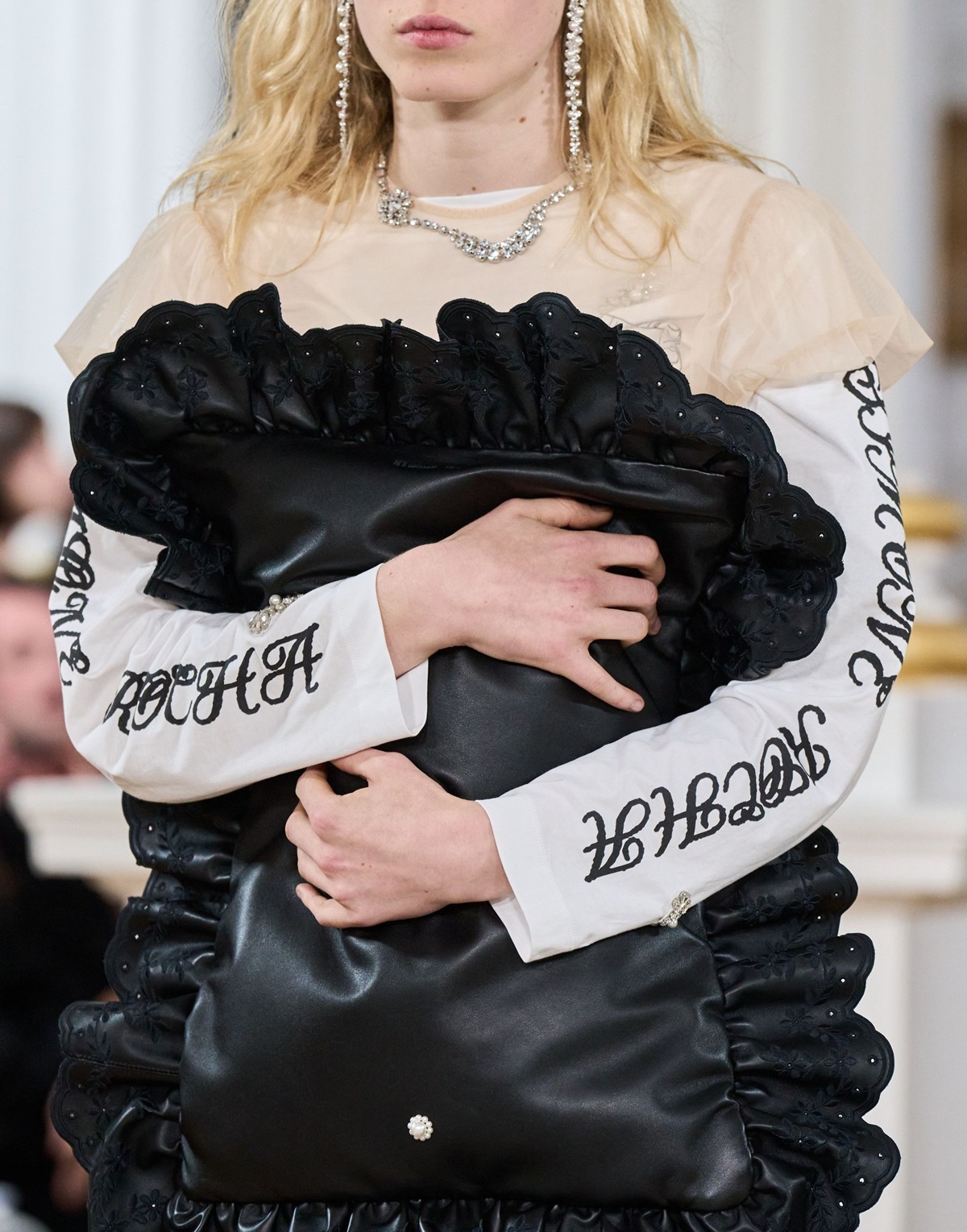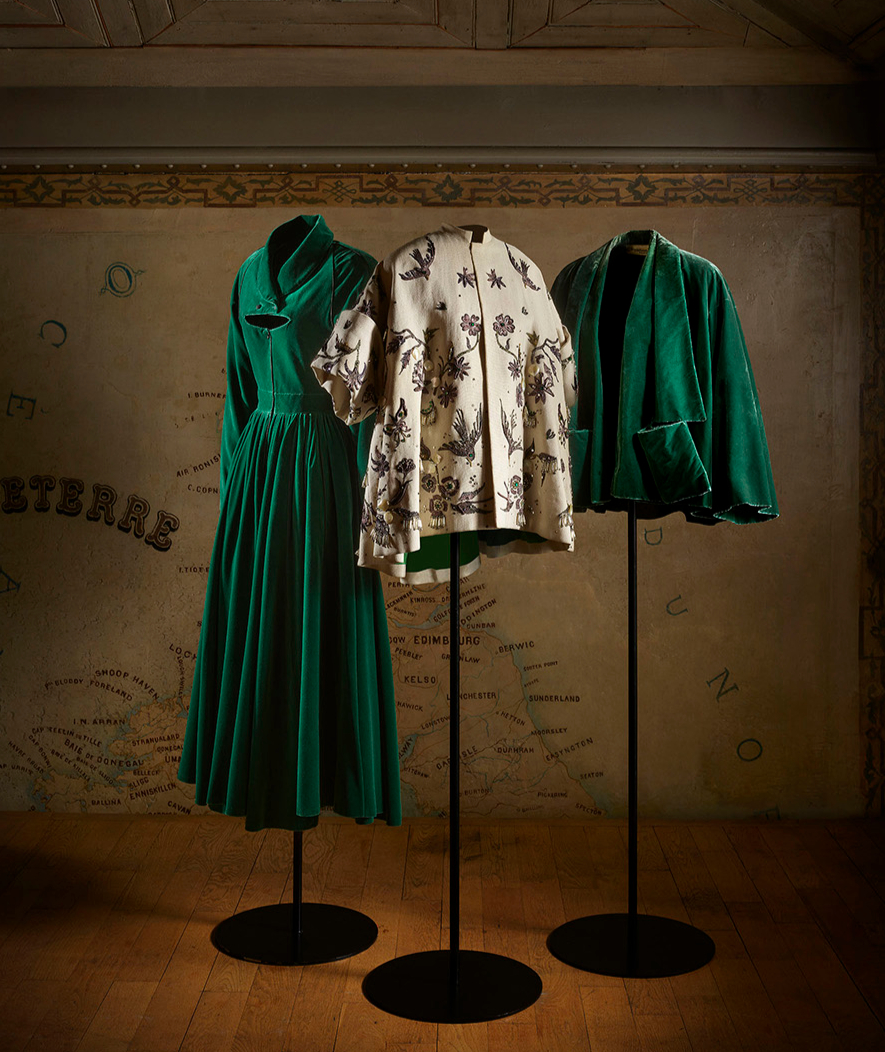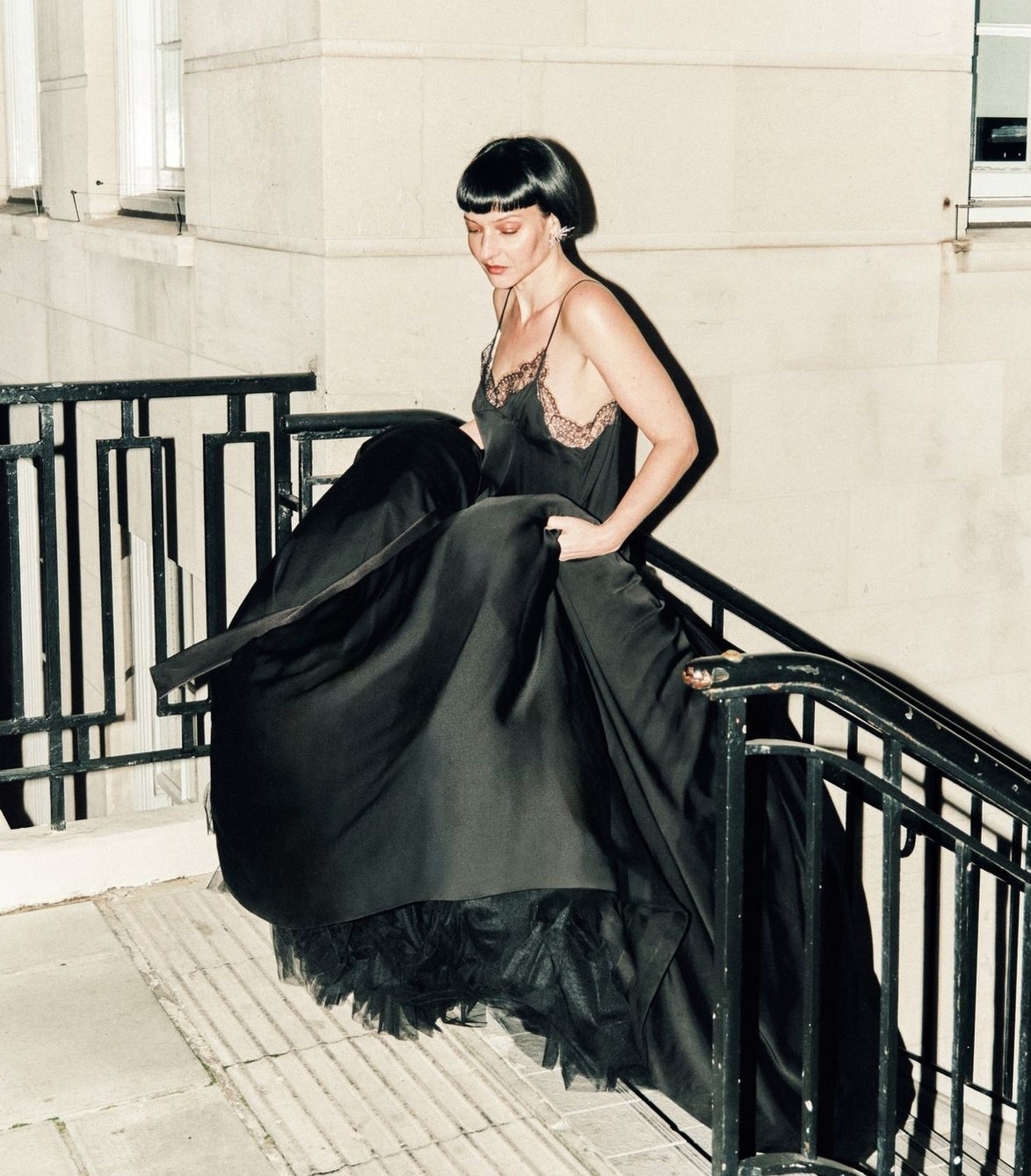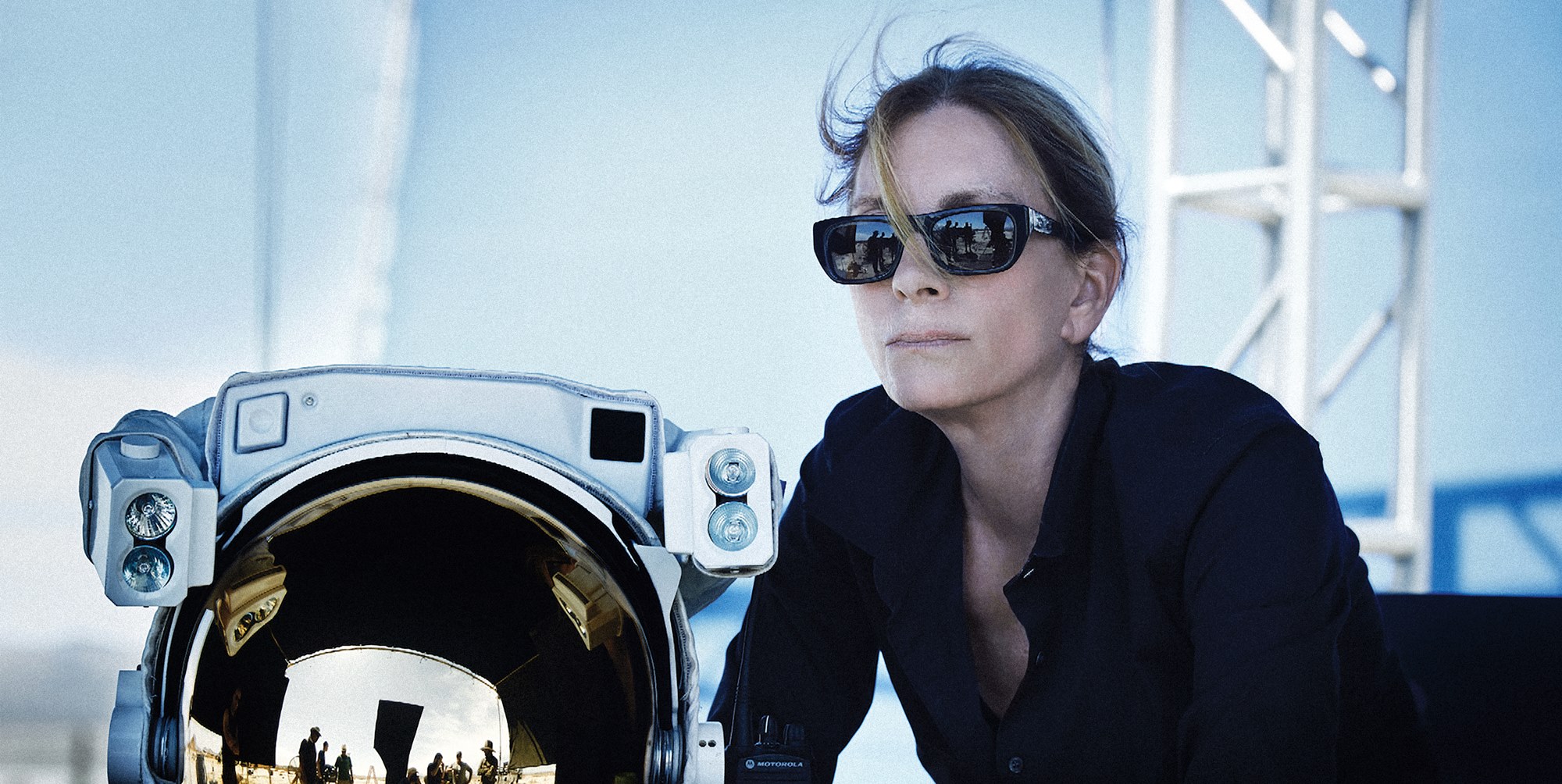
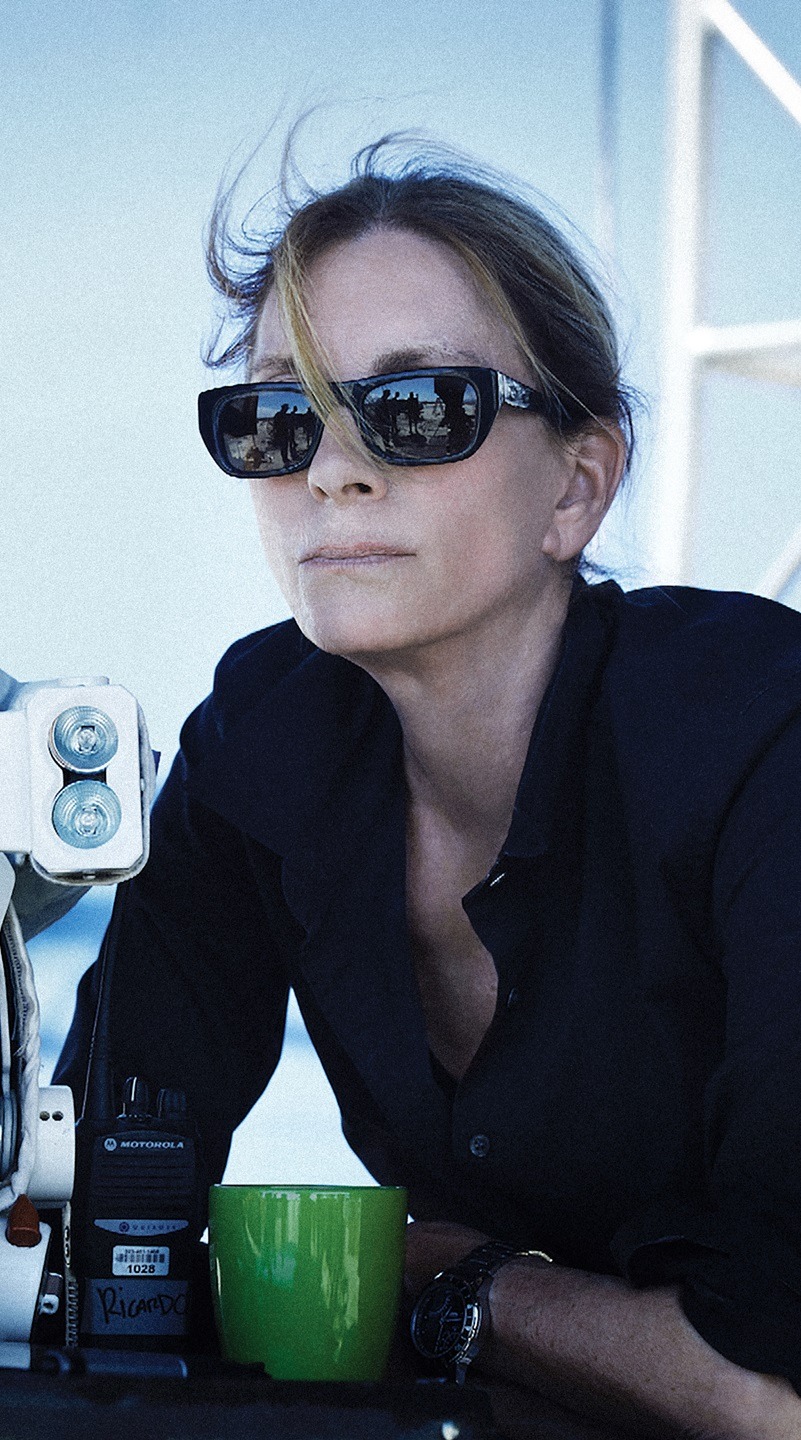
After several days of shooting fashion stories—including the September cover of Vogue Adria—Taylor Angino once again sat down with fashion-world legend Tonne Goodman. This time, the two sifted through her rich archive, retracing a remarkable career from its very beginnings: from volunteering at The Met over first styling steps, all the way to her two-hundredth Vogue cover.
Tonne: Wow, these are such beautiful photographs (laughs). That’s my sister Mandy and me at the dining table in our home at 1185 Park Avenue, where we grew up. Next to it is my mother photographing Wendy, in the Manhattan house they lived in before we moved uptown. That roll of film—there I am, peeking up at my older sister. Look how beautiful my mother was.
Taylor: So chic—and she was behind the camera, too!
Tonne: Yes, she photographed us constantly. There’s one picture in particular that I love but can’t seem to find. She submitted it to The New York Times for their “Best Child’s Photograph” contest, and it actually won! This photo here, on the far right, is of my mother and me. Maybe it’s not the most remarkable image in the world, but it reveals two important things: just how chic and charming she was, and how much I adored her—look at the way I’m gazing at her. That fascination lasted my entire life. And here’s my father—he was the most handsome man in the world. He looked like a movie star, but he was a surgeon. I especially love this photograph of them together, taken by none other than Alfred Eisenstaedt, in Mount Top. He declared them the most beautiful couple in New York. And they truly were. Look at them!
Taylor: That was childhood. And then came the teenage years—you started modeling at fifteen.
Tonne: (laughs) Yes, here’s how it happened. I was fifteen and needed a summer job. My parents were close friends with Leo Lerman, who at the time was the editor-in-chief of Mademoiselle—a magazine that no longer exists, but it was like a “baby Vogue,” very chic. They didn’t really have anything for me, but Leo decided I might try my hand at modeling. I went in for a test shoot, and that summer, I became a model. After finishing high school, I took a year off and returned to modeling. I was fortunate enough to work with Richard Avedon (he actually took this photograph), Irving Penn, and so many of the great photographers of the era. The only reason I was photographed at all was because Diana Vreeland asked for it—this is the actual memo she sent to her team. I think it was largely because I was dating her grandson at the time, Nicky (laughs). After that, I went off to art school. I was a terrible model, so I returned to my studies. I spent one summer in Perugia, at the Accademia di Belle Arti di Perugia.
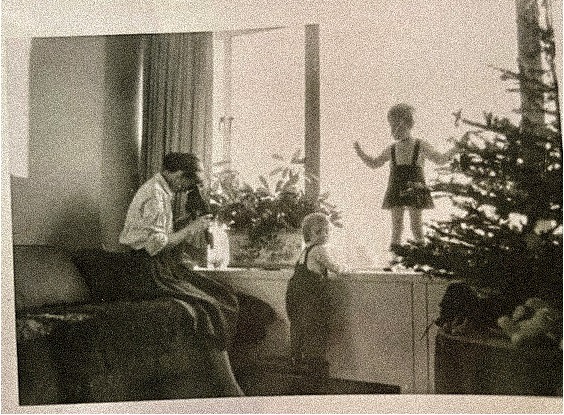
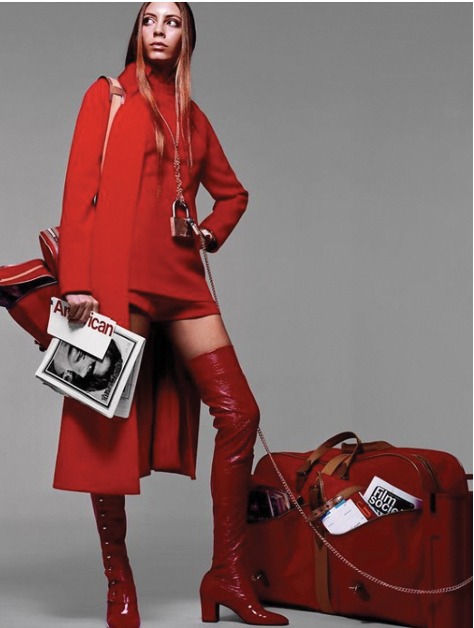
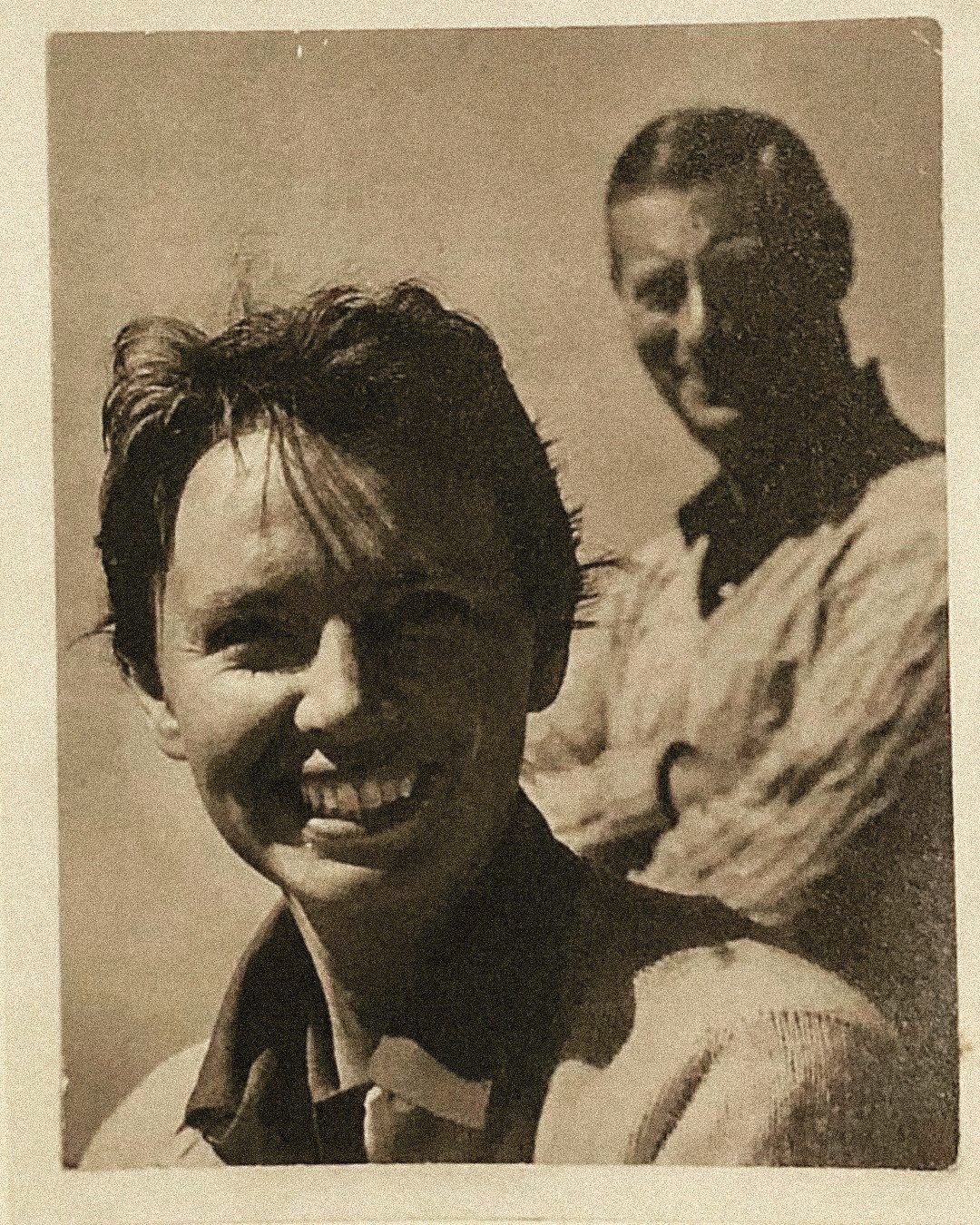
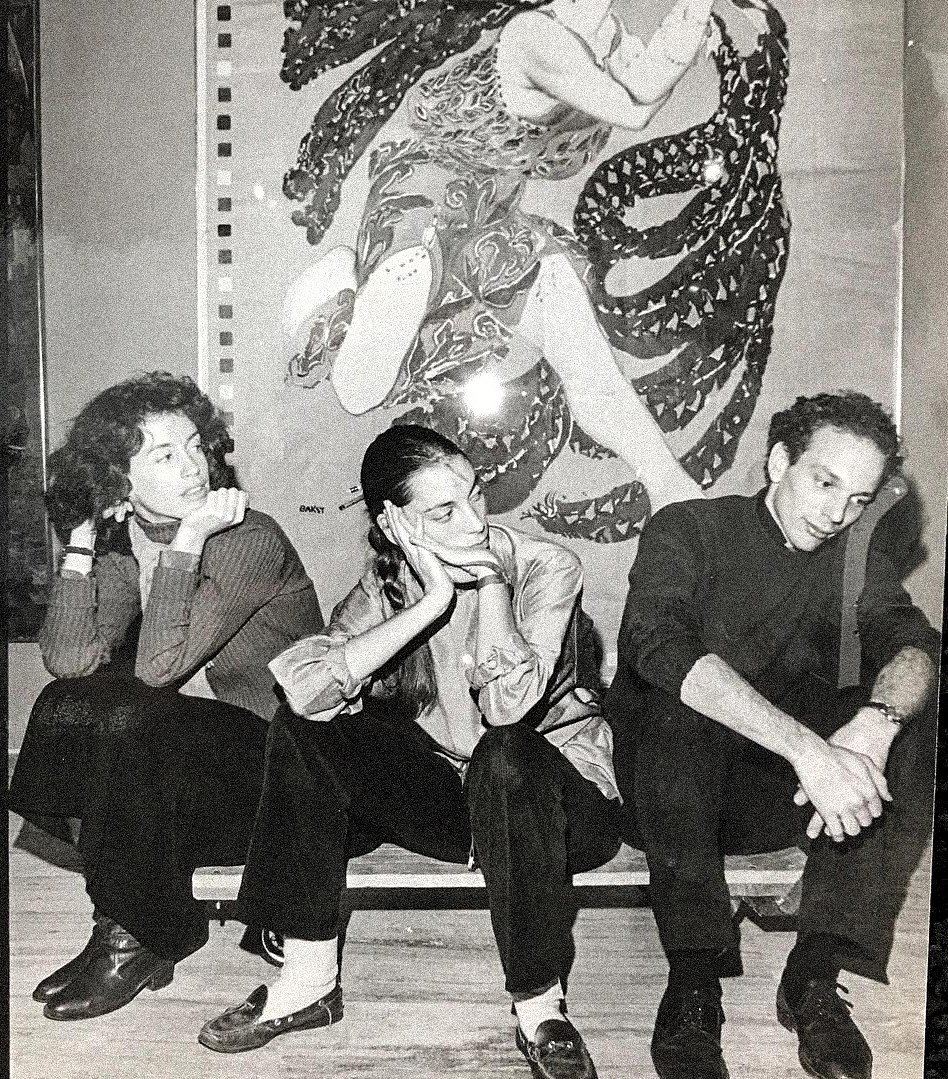
Taylor: Wait—before we move on, I want to ask: when did you realize modeling wasn’t for you? Why do you say that?
Tonne: I think models are vastly underestimated in terms of the work they do, and in the generosity they bring to it. When you’re in front of a camera, you’re giving yourself to the picture—especially back then, when everything was shot on film. You had to offer yourself, not just stand there. And I… I just stood there. I wasn’t very generous (laughs). Real models give of themselves so easily, so naturally. That’s the true magic.
Taylor: I get it (laughs). So then art school?
Tonne: Exactly. I spent the summer in Perugia, or rather in Spoleto, where Gian Carlo Menotti ran a spectacular festival—I think it may still exist. I worked there that summer. Roman Polanski was staging an opera by Alban Berg, and he needed someone to translate Italian for him. My friend Abigail and I took on the task. It was excruciatingly boring and tedious, and the final notes we handed him were literally typed on toilet paper. He exploded, as you can imagine.
Taylor: Well, if he was that impossible, maybe he deserved it (laughs). As I sifted through your archive, I noticed a kind of pattern in your life—everything seems to be connected. How long did you stay at art school?
Tonne: I was there as a freshman, then took time off to go to Italy, came back home, and never returned after that.
Taylor: I remember you once told me that one of your professors said you were “too stylish,” or had “too much taste” for art school—and that was why you left?
Tonne: Yes, something like that. It was during my first year. He was a very arrogant man, and he said to me: “You have too refined a taste. You’ll always rely on it, and you’ll never overcome it. I don’t think this is the place for you.” I was devastated at the time. But in hindsight, he was right. That’s precisely what I do now—I live in style, in taste.
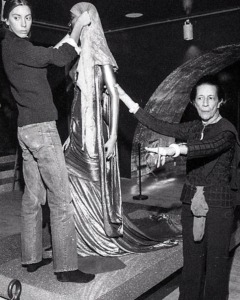
Taylor: Still, I feel like art school left a mark on you. I notice it whenever we’re on set—even in our latest Vogue Adria shoot. Art trained you to analyze, to break everything down into details. You look at each element and whether it sits in harmony with the whole.
Tonne: Absolutely. In art school you really learn how to look. You’d be surprised how little we actually look—we recognize things, but we don’t truly see them.
Taylor: And then you started working at The Met?
Tonne: Yes. At that time Mrs. Vreeland—Nicky’s grandmother—was beginning her work revitalizing the Costume Institute at The Met. I volunteered with her, along with many others who later became quite prominent. It was mostly the children of friends who came in to help with the exhibitions. It was wonderful. Having so many young people around her was vital—for us as much as for her. She had extraordinary energy, and I think she needed that youthful environment. For us, working with her was a privilege. She often said: “How will you ever know anything if you don’t ask? No one knows everything—you have to ask.” She encouraged us constantly.
This was the first exhibition I worked on, Romantic and Glamorous Hollywood. There was a Cleopatra costume worn by Claudette Colbert, and that’s me, along with my sister Wendy Goodman and Steve Depetry—one of the most talented people I ever knew. He had an extraordinary touch, dressing mannequins, staging the displays, bringing them to life. A dear friend we sadly lost to AIDS.
Taylor: I’ve seen this photograph before, but now it feels especially powerful. At that moment, you had no idea you would become a stylist. After The Met, you went to The New York Times.
Tonne: After working five years with Mrs. Vreeland, I realized I would never land a real position at The Met—I had, after all, abandoned college. Then Carrie Donovan, one of the editors who covered the Costume Institute exhibitions, offered me a job. Aside from being Mrs. Vreeland’s assistant, I was often the one walking editors through the shows, explaining the work. I became the point of contact. After working with me, Carrie asked if I would come to The Times. Of course I said yes. My role was “fashion reporter.” It sounds funny now, but I learned so much.
This photograph here is the first shoot I worked on—with Helmut Newton. I should add, this was a time when there were no assistants. You packed your own bags, rented the car, did everything yourself. After the shoot, it was my job to select images with the art department, clear rights, handle credits. And remember, there were no computers—you typed everything by hand and literally had to count characters so as not to exceed the line limit (laughs). It was an incredible training ground, because I had to repeat this process every single week.
Taylor: And from The Times, you went practically straight to Life.
Tonne: Yes—similar story. Again I realized I’d never secure a formal position, because of my unfinished studies. So I started freelancing. I don’t even recall how I first connected with Life, but they’d noticed how well Sports Illustrated covers with girls in swimsuits were performing, and decided to replicate the formula. Suddenly, the covers were full of girls. That was also the first time I met Patrick Demarchelier, who became a dear colleague and friend.
Taylor: And Bruce Weber as well, right?
Tonne: Yes, I worked with Bruce at The Times. We went to Texas, to a lake surrounded by cacti and dead trees—it was an extraordinary landscape. The model was wonderful. At one point we almost shaved her head completely bald, but didn’t (laughs). Bruce also shot the Life cover with Madonna. I adore that cover—it was when she was just breaking through.
Taylor: That was your first time working with celebrities?
Tonne: Definitely.
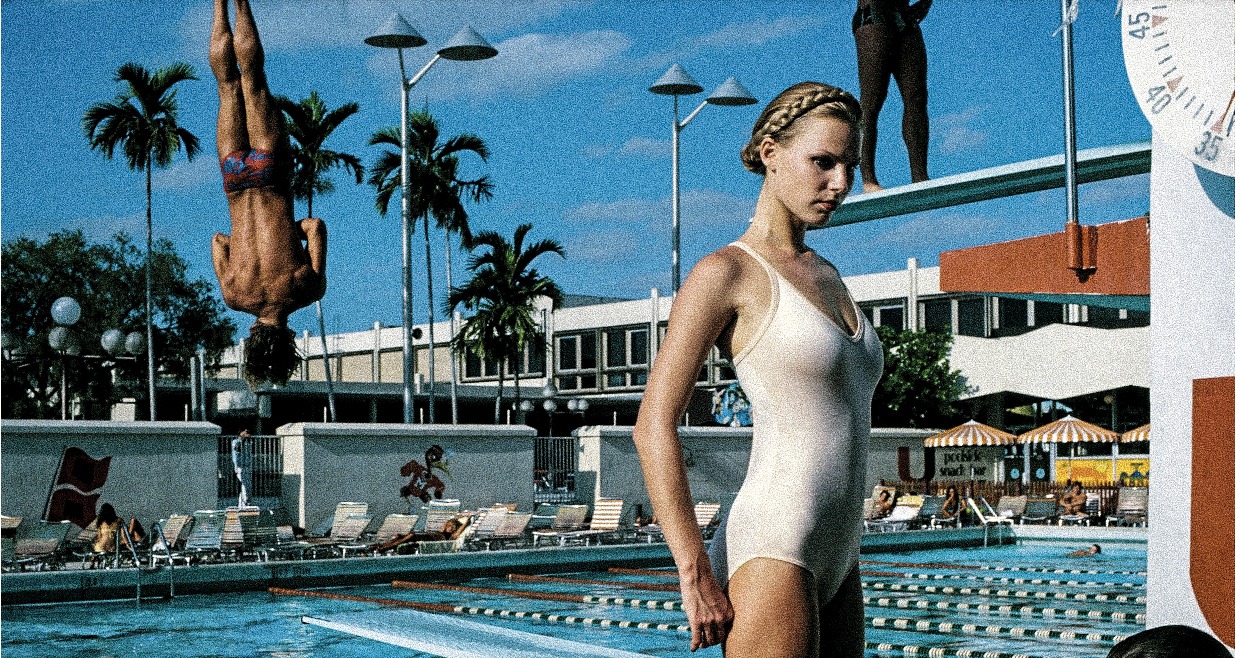
Taylor: And then Calvin Klein “took you in.”
Tonne: That too was through Bruce. I had been freelancing, and they invited me to work on a campaign—this was my first. But Calvin wanted me to officially join the company. I declined. I was in a long-term relationship at the time, and explained to him that freelancing suited me better. Bruce’s photographs were stunning—I fell in love with them. And this skirt here? I still own it. It’s a Native American print, entirely handcrafted. We found it in a vintage shop. Bruce encouraged me to mix things up, to let go. To pair Calvin Klein jeans with other pieces. He’d say, “Do something.” So we’d scout vintage stores—I’d find scarves, skirts, men’s pieces. It was wonderful. This photograph of me was taken during one of those CK shoots.
Taylor: Bruce, Calvin, you—together. That’s a cosmic alignment.
Tonne: When I officially joined the company, it felt like home. But after some time, I moved on from Calvin Klein to Harper’s Bazaar. Liz Tilberis had just left her editor-in-chief role at Vogue UK to take the helm at Bazaar. That was in 1992. Around that time, I got married and had children—Cole in 1994, Evie in 1995. These photographs here are from those years. You can see me with the children—and my hair is extremely short, because just before Evie turned two, I was diagnosed with breast cancer. I underwent surgery, chemotherapy, became a single mother, and felt incredibly blessed to have my kids. This, here, is the first cover I worked on for Harper’s, which Paul Cavaco and I did together.


Taylor: Oh, so you and Paul did that first cover together? I thought you did them all.
Tonne: No, just that one. All the other Bazaar covers I did on my own. For a while, Paul and I shared the role of Fashion Director. Then he moved to Vogue, and I remained at Harper’s in that position.
Taylor: What was it like, making covers in those days?
Tonne: As you can see, it wasn’t yet the era of celebrities—mostly models graced the covers. Everything was done collaboratively, as a team. Looking back at them all together now, it feels surreal. Eventually, the celebrities began to appear—Demi Moore, Meg Ryan, Tom Cruise, who was on the White Issue, the same year Liz passed away. Then Julia Roberts. It’s a very different process, working with a model versus a well-known star.
Taylor: Absolutely. And this photograph—what does it remind you of?
Tonne: When I was pregnant with Cole, my first child—it was after I’d had a miscarriage. So when I became pregnant again, I saw this photograph in The New York Times. A man standing in Manhattan, beside an angel. By the way, how did you find this image? I’d been searching for it for years. I was transfixed by it, enchanted. For me, that angel was Cole. I created an entire story inspired by it, with Amber as the fallen angel descending into New York. It was a reference to Wim Wenders’ film Wings of Desire. We shot at five in the morning to capture an empty Times Square (laughs). Peter Lindbergh photographed it—and from then on, he became a dear friend.
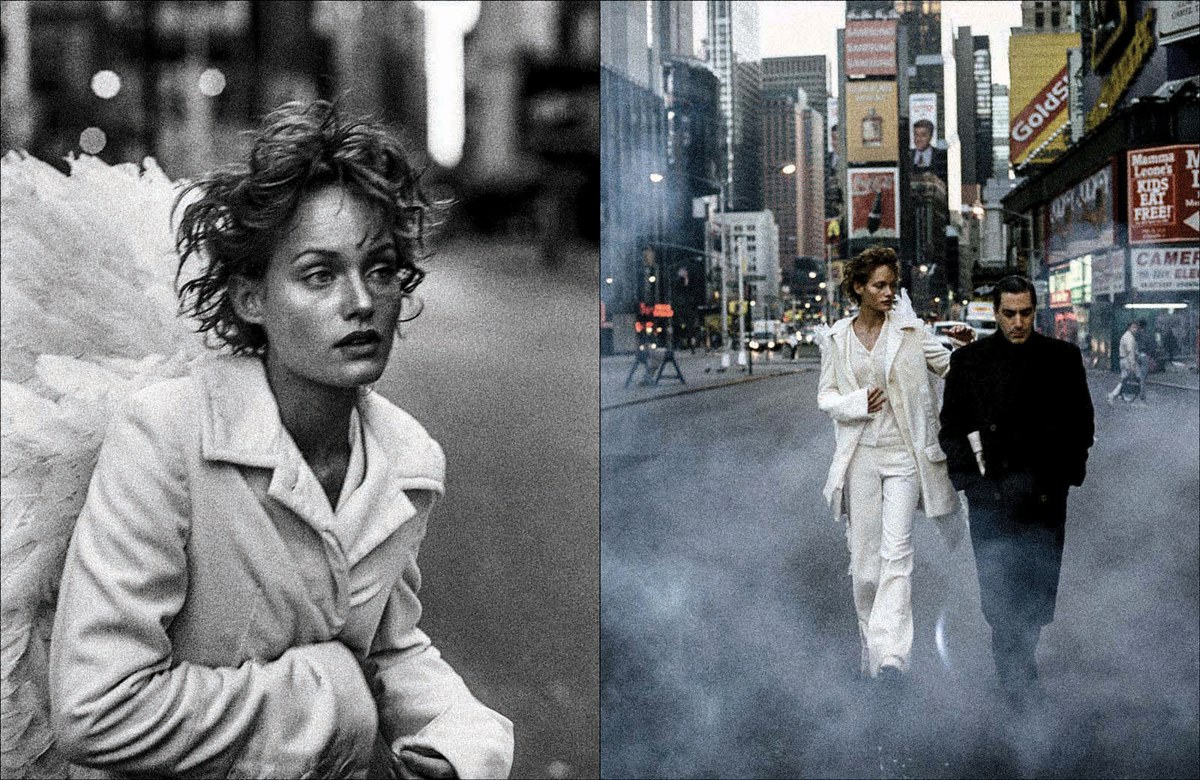
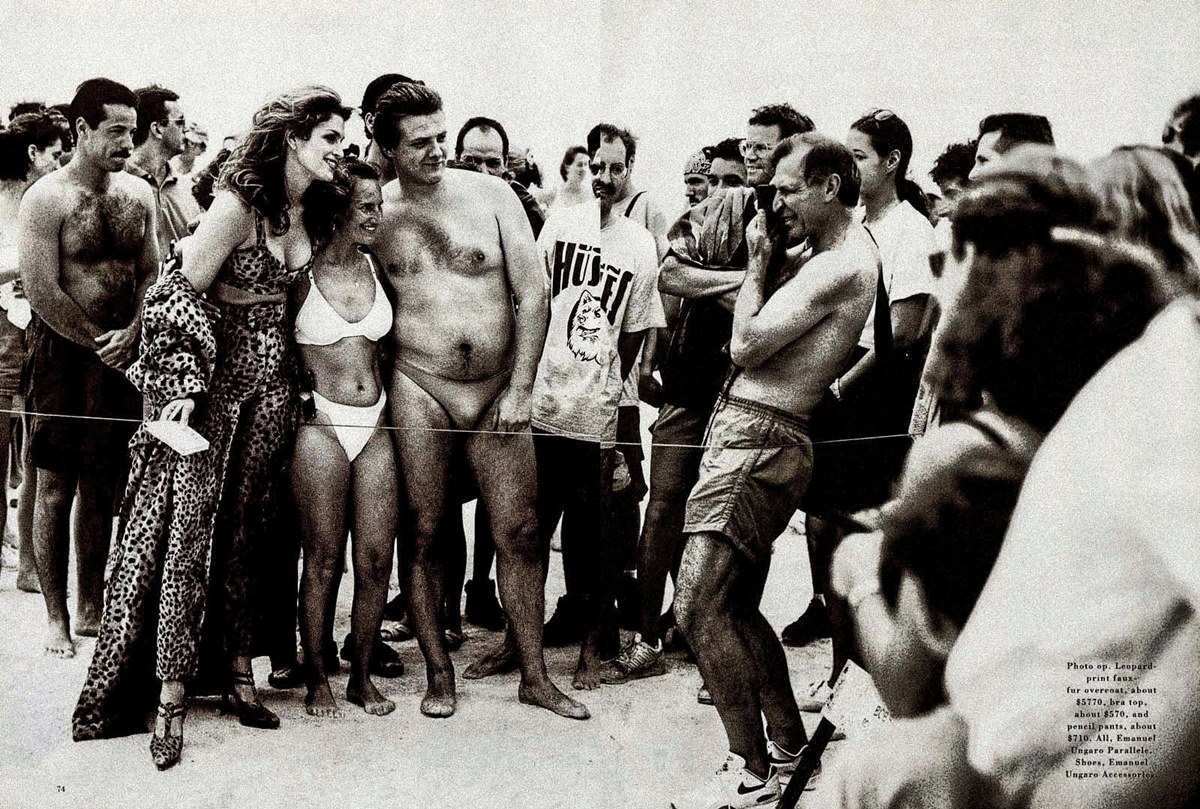
Taylor: And this is Miami?
Tonne: Yes—Cindy Crawford on Miami Beach, photographed by Lindbergh. We even included passersby on the beach in the shots.
Taylor: Testing my knowledge as I look at these photos—that looks like Alaïa and Jean Paul Gaultier?
Tonne: I think so, yes. I was heavily pregnant at the time, I remember. There’s even a behind-the-scenes photo of us shooting Cindy—you can see, in the corner, this very large woman. That was me (laughs). Speaking of Alaïa, this shoot with Amber in Nevada is one of my favorites—all Alaïa looks. She was so strong, so beautiful. And the park in Nevada was extraordinary, very close to Area 51, shrouded in mystery about UFOs. An incredible setting.
And this one—such a special shoot. It was the first story I did for Harper’s: Louis Kahn’s installation at Yale University. I’m not sure how I managed to get permission, but I did. The team was Christy Turlington and Patrick Demarchelier, shot on Yale’s campus. And this off-the-shoulder dress—Donna Karan. It caused quite a stir when Hillary Clinton wore it.

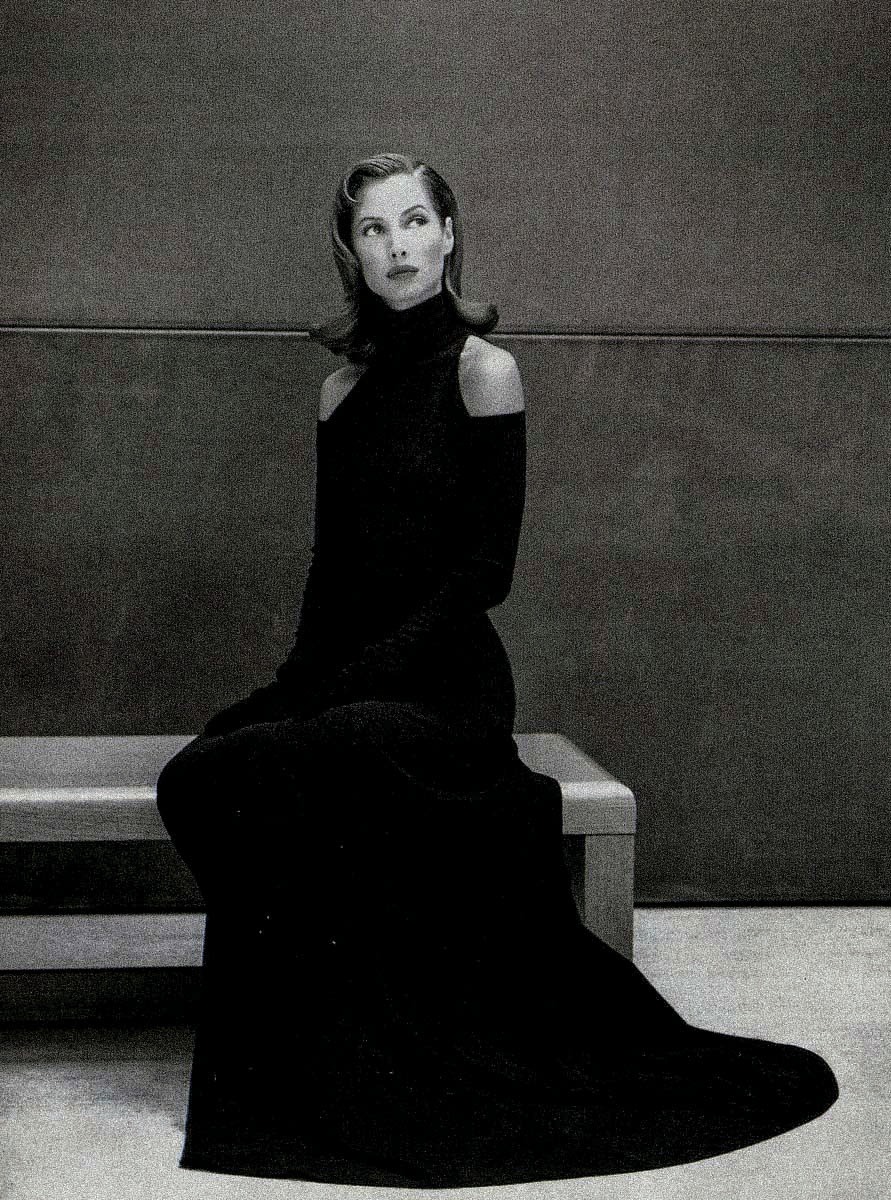
Taylor: Why did you choose that location?
Tonne: One of my favorite documentaries is My Architect, made by Louis Kahn’s unacknowledged son. Louis himself was not conventionally attractive, yet he was magnetic to women and had many children. One of his sons created that remarkable film.
Taylor: I love how your inspirations flow into your stories—films, books, artworks, even a photograph in the paper. It all finds its way into your work.
Tonne: You know which chapter you’ve skipped? When I lived on a boat.
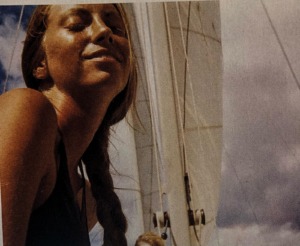
Taylor: That could be an entire book in itself (laughs).
Tonne: There are wonderful photographs from that period—shoots I did with Patrick on the sailboat, with Linda Evangelista. She was dating the actor from Lynch’s Blue Velvet at the time. We created a beautiful story then. I have so many photographs from that phase, because I actually lived on the boat.
Taylor: And this photo?
Tonne: That was from one of Galliano’s iconic collections—this yellow tulle gown, layers upon layers. We heard a noise outside, and she simply walked to the window to see what it was. I turned, saw her, and told Patrick: “That’s it. That’s the shot.” On set, you always have to stay alert. You never know when the picture will happen. That’s something I also learned in art school—never take anything for granted. Be present. After Liz passed away, Harper’s changed. Paul had already gone to Allure, and it was clear to me Bazaar would never be the same without Liz. So when the Fashion Director role at Vogue opened, I stepped in. I joined Vogue in September 1999. My first cover was with Gisele. After that, we did so many—at the time, all with models.
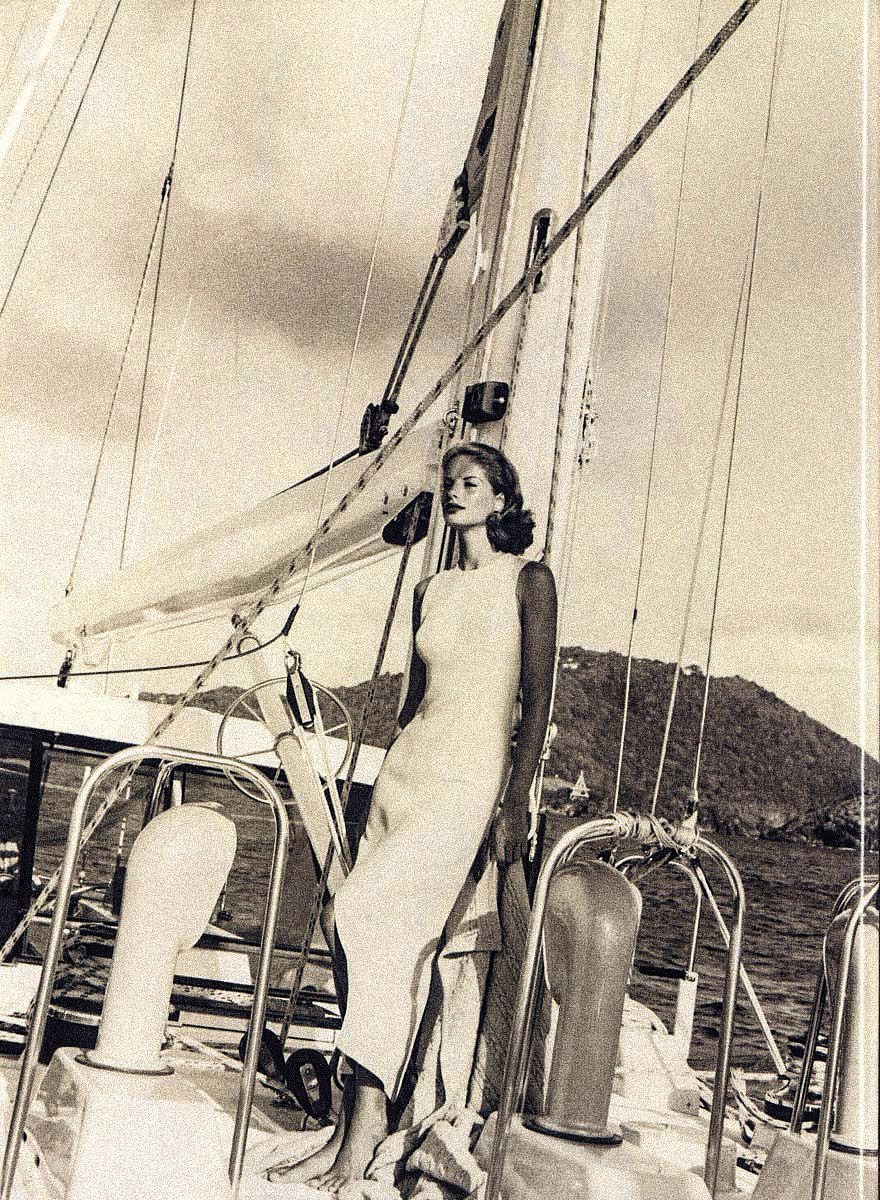
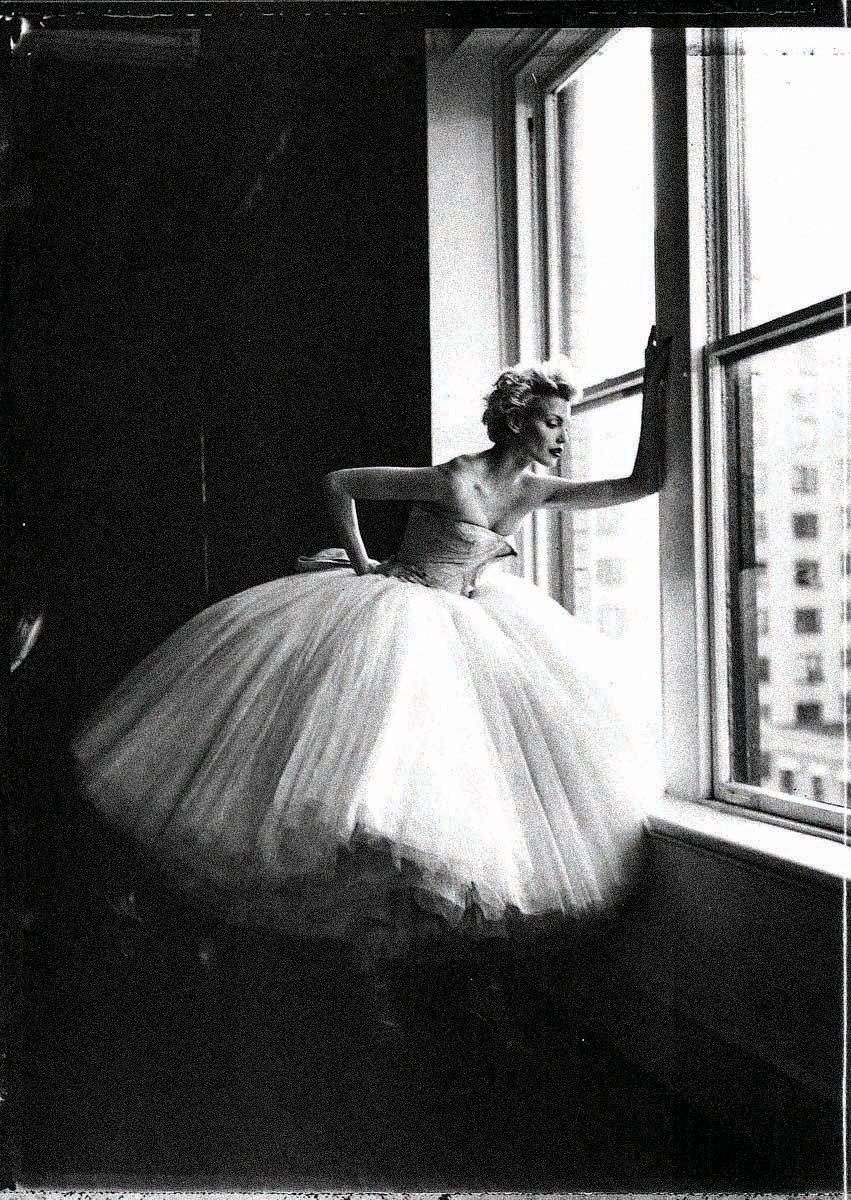
Taylor: As I was going through your work, I kept thinking—you’ve created so many covers. This one was your first with a celebrity rather than a model, wasn’t it?
Tonne: Yes, Marion Jones, the Olympic star. And it was also my first time working with Annie Leibovitz. That was my introduction to the Leibovitz universe.
Taylor: And from there—you were catapulted.
Tonne: Paul hated doing covers. Grace Coddington, who was at Vogue with me, also didn’t enjoy them. So they fell to me. And I did them—all told, 204 covers, if we’re only counting Vogue.
Taylor: I’m thinking of a few things at once. One of the most important lessons I’ve learned from you is diplomacy—how crucial it is when working with celebrities. I remember working with you on the Dr. Biden cover, in the first hundred days of the administration. She wanted to be both First Lady and Dr. Biden. You had to balance both identities.
Tonne: It’s never easy. Each shoot is its own story—unforgettable people, unforgettable moments. Here, for example, this necklace really was worth a million dollars. That was when Nicole Kidman was filming Moulin Rouge. I’d worked with her before, back at Harper’s. I adore her. Steven Meisel shot that cover, and it was magical. Then there was Emma Stone, photographed by Mario Testino; Cate Blanchett, in this extraordinary Galliano collection, by Steven Klein; and Rihanna, photographed by Annie Leibovitz.
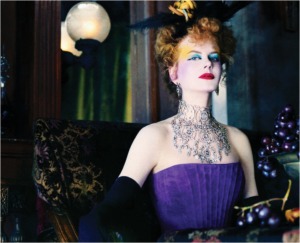
Taylor: I’m having such a vivid flashback. I remember when your covers hit the stands—Halle Berry, Sandra Bullock—all before social media. For so many, magazines were their very first contact with fashion. You were shaping the way women understood style, always pushing boundaries. Even during Covid.
Tonne: We were granted special permission to shoot at Penn Station—that’s Bella Hadid, running in a mask. And this one was the very first Covid shoot, with Ethan James Green. There were so many protocols in place just to make it possible—masks included. And then this one, the post-Covid cover with all the models—I can’t quite recall the exact theme.
Taylor: It was about returning to work, going back to the office.
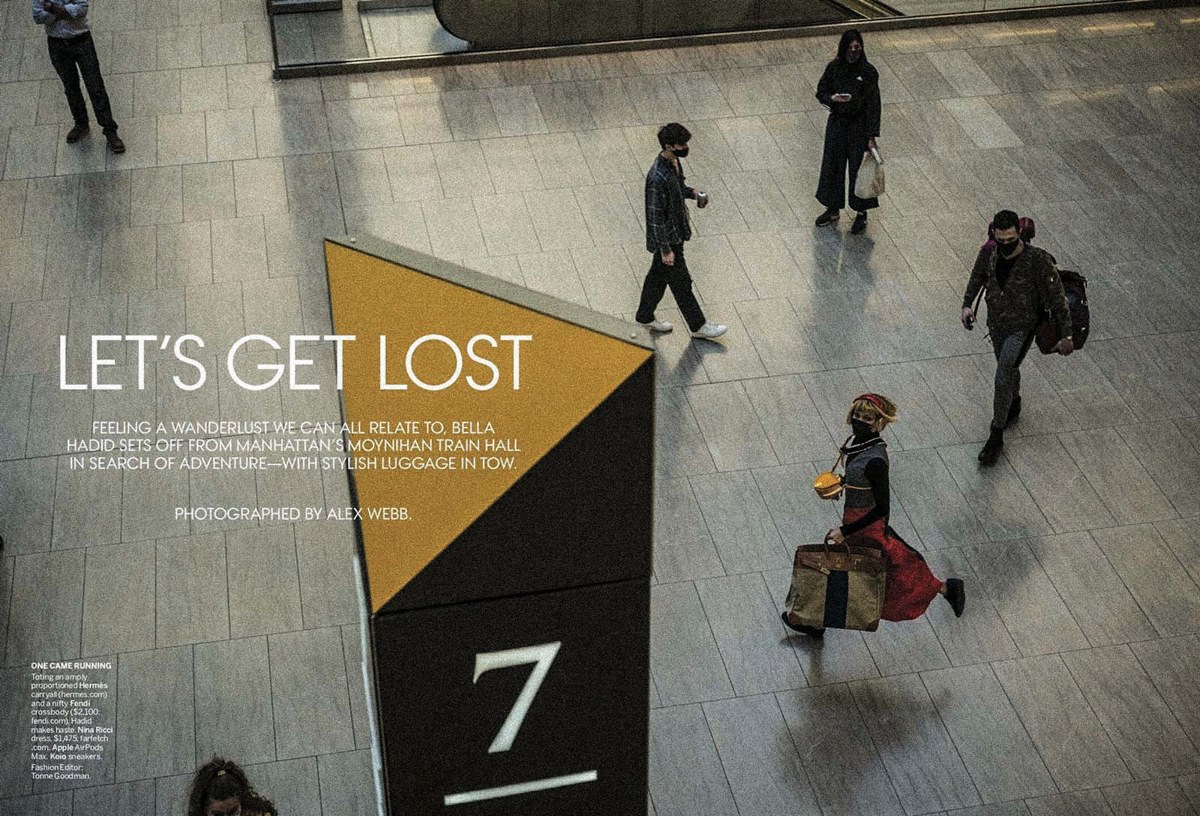
Tonne: Exactly. A kind of reintroduction—new faces, a new generation, greater diversity, a new reality. I also loved our “Strokes of Genius” story. And of course Kendall—photographed by Mert and Marcus. We didn’t have enough time, and we needed more images. We were at, I think, Mert’s house, unsure where to shoot. Then I saw that green sofa and said, “There!” It was perfect.
Taylor: And this shoot with Steven Klein?
Tonne: Incredible. What’s fascinating is that this capsule was actually a SpaceX prototype—the real thing. It’s still one of my favorites. And this other photograph—everything was real. We were on a crane, with that airplane in the background. Nothing was fabricated. And this one, with the flying papers—that was an important image, highlighting paper recycling. In hindsight, it feels like a foreshadowing of my next chapter (laughs).
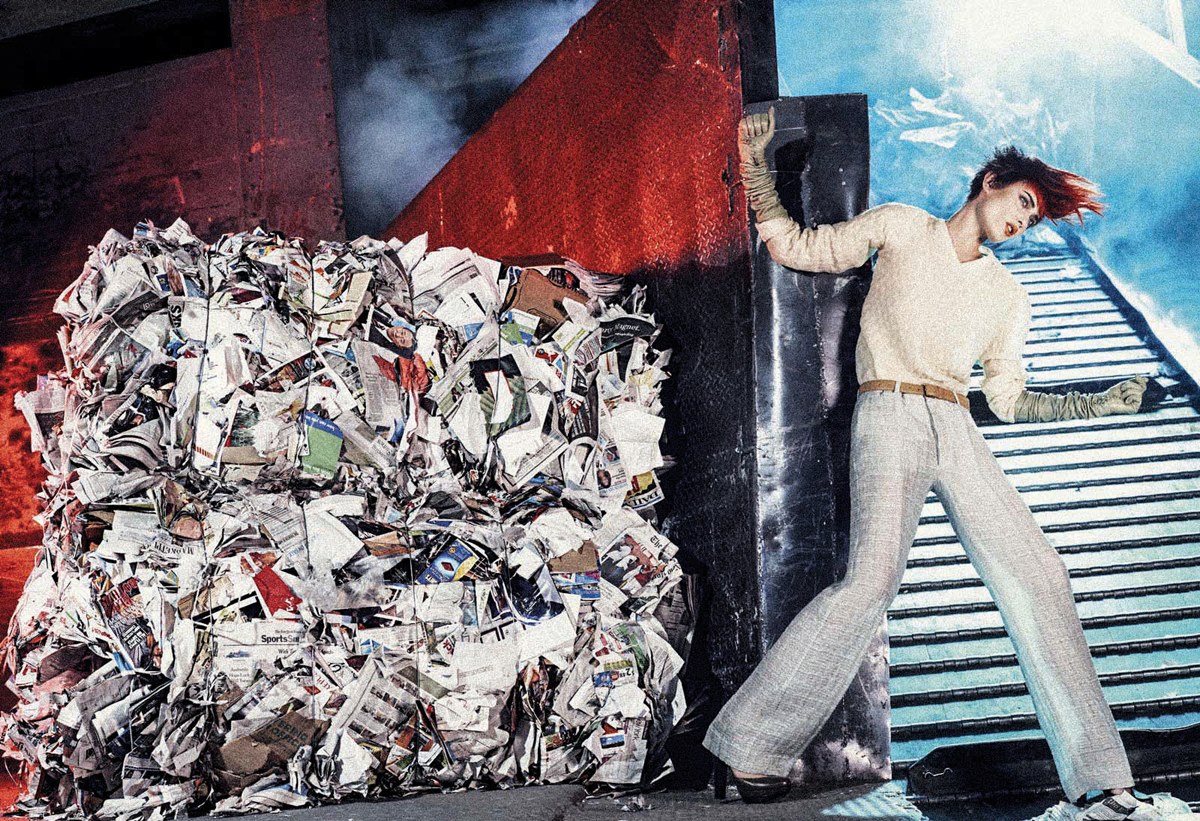
Taylor: What’s the relationship between the runway and the actual shoot?
Tonne: You’ve shown it beautifully here—what is the look on the runway, versus how it can be transformed in an image. This is the exact same outfit. Styling is about building a picture. You don’t just put it all on at once—you construct it, layer by layer. You play. What about the nails? Let’s change the hair. It’s a collaborative build. I remember that the brooch on her sleeve was the very last thing I added. The concept was bohemian, but we had fun with it.
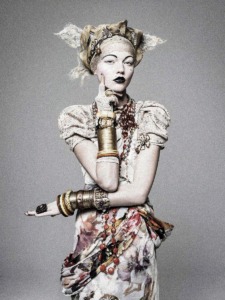
Taylor: How do you remember this particular shoot?
Tonne: Ah, Martha Graham. I adore ballet—all dance, really. And the West. I spent so much time there with the love of my life. This was Lisa Winkler—model, dancer, extraordinary in both.
Taylor: And now—something special. A Vogue cover with Lady Gaga.
Tonne: Yes, my first time working with Gaga. I remember chatting with her before the shoot—she told me she wanted to channel Anna Wintour a bit. So we did, just a little bit(laughs). She wore a gown by Haider Ackermann, who was just emerging at the time. His exquisitely draped, kimono-like gowns caused a sensation. I asked if someone from his studio could bring the dress and help me, so I wouldn’t style it incorrectly—and Haider himself showed up. I kept apologizing for how long everything was taking, but he was so patient. Now, he’s creative director at Tom Ford—which is wonderful.
Taylor: I remember 2013, when I was an intern at Vogue. I always arrived first, and my favorite part of the day was unlocking the editors’ offices. I’d often unlock yours. You’re so methodical in your approach—mapping locations, creating storyboards. It was invaluable to me.
Tonne: It’s true. I love to study every detail. When I build characters, the model is no longer herself—she becomes someone else. And I love constructing that carefully. In this shoot, for example, we cast different girls representing different body types. Models embody ideals, but ideals shift with time. This particular story was significant—it echoed the wartime USO tours, when Bob Hope and countless actors and actresses would travel to entertain the troops. I think that spirit is extraordinary. We recreated those scenes—Linda as a version of Marilyn, surrounded by crowds. It was about creating joy. Linda stayed in character the entire time. I treated her as though she were in a film. It was so much fun.
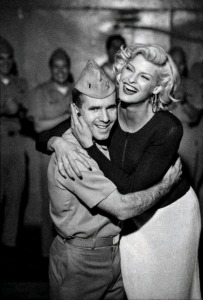
Taylor: And this one?
Tonne: This was a concept Diana Vreeland developed with Lord Snowdon, about the beluga whale. This photograph breaks my heart—so much serenity in a single image. These other photos you are showing, it is work with Steven Meisel, everything was so playful. From him, for me, to the assistants—everyone was in on the fun. We built characters together. Later, Ethan James Green reinterpreted this story. This one here—we recreated editor looks, in our own way. And do you know what’s especially fun? That photograph in the bottom right corner is Chioma—now the editor of Vogue UK.
Taylor: It’s fascinating—looking back at all the characters you’ve created, the way you can transform a suit into something entirely different. Just… wow. Like this “Splitting Image” story—two radically different looks from one designer. And the golden leg! Where did that idea come from?
Tonne: (laughs) Honestly, I don’t know. She had gold on her head, so it felt like a natural balance. I remember that shoot so vividly. This photograph, far left—the model in the wide yellow skirt—Anna cut it. I remember walking into her office with the photo in hand and saying, “Would you reconsider? This is wonderful—it’s joyous, it’s beautiful. Please.” And she did—she put it back in.
Taylor: That’s hilarious, because I remember that image so clearly. I must have been twelve years old, and I don’t remember much else from that story—but that skirt, yes. Thank you for fighting for it.
Tonne: This was my Style Ethics column. I asked all the designers I’d worked with if they’d contribute a “pick-up” picture, and they all agreed. Nothing is ever truly sustainable, but this story included designers working toward sustainable fashion. I shot it with Patrick, and it was incredibly chic.
Taylor: What I especially love about your work is how your private obsessions seep into it. Like this Emma Stone cover—political, urging people to vote.
Tonne: Absolutely. And it’s funny—Emma had never worn short hair before. After this shoot, she decided to cut it.
Taylor: We’re getting close to some of your most recent covers.
Tonne: Ah, Hailey Bieber. We were in such a rush that day—she had a flight to San Francisco waiting. This image was taken at the very last minute. They told us we were out of time, but Hailey said, “Come on, let’s just do this one more.” We threw her this Prada shirt, she stepped into the shower—and that was it. It became one of the most popular covers, precisely because it was so unexpected of her.
Another recent favorite—Ayo. She’s really becoming a major star. Here she is in Stella McCartney, photographed by Ethan James Green. Absolutely stunning.
Taylor: And finally—this is you!
Tonne: Yes, with the peace sign I grew myself out of ivy. We’re a very politically aware family. For me, that’s essential: sustainability, equality, creativity, inclusivity. In January, we created four covers, each dedicated to one of those values.
Taylor: I think that’s beautiful—and your convictions shine through in your stories. You always lead with compassion. On set, you treat everyone equally, and I treasure that. I remember showing you a Pollock painting and asking, “What do you feel when you look at this?” That’s what I always ask myself when I look at your work. The way you can capture emotion in a photograph—in today’s world, moving so fast and flooded with images—that’s extraordinary.
Tonne: I can’t thank you enough for saying that. It means so much. I have to admit, my mother influenced me deeply. She was from Ohio, but fought her way into art school, even while raising six children in four years. She pursued what she believed in. I remember us in the back of Sotheby’s with her—exposed to art, exhibitions, ballet, surrounded by people driven by curiosity. My mother was truly a force of inspiration for us all.
Taylor: And now you are that for others. Isn’t that beautiful?
Cover photo: Peter Lindbergh
